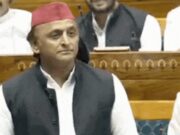NEW DELHI: City gas utility Indraprastha Gas Ltd has set its eyes on 57 villages in Delhi’s south-west region to expand its piped natural gas (PNG) service as urban areas near saturation and electric vehicles threaten compressed natural gas (CNG) sales, affecting overall volumes.
The company kicked off its rural campaign by starting gas supply to a few households in Dhansa village, with 2,000 potential households, near Najafgarh on the Republic Day.The campaign is part of a national drive initiated by the Petroleum & Natural Gas Regulatory Board (PNGRB) to popularise PNG in line with the government’s bid to expand the share of gas in India’s energy basket to 15% by 2030 from about 6% at present.
Dhansa is the first village of territory of Delhi as one enters from Badli in Haryana. It is one of the Capital’s largest villages with a population of 7,000 people.
Launching the PNG service, PNGRB chairman Anil Kumar Jain appealed villagers to co-operate in laying pipelines so that households get connections quickly. The national drive, which will be on till March 31, is aimed at making villages and towns stakeholders in the country’s growth through adoption of clean energy. He added that initiatives to promote biogas and agri-waste-to-gas projects will increasingly supplement clean fuel supply in rural areas, creating a circular economy in villages.
IGL managing director Kamal Kishore Chatiwal said the company has connected 1.7 million households in the Capital and in an encouraging sign, 450 out of the 2,000 potential households in Dhansa village have already registered for PNG connection. The company’s director (commercial), Pawan Kumar, said IGL is focused on connecting villages and towns with PNG in all its licence areas.
IGL had started laying a 1.2 km gas pipeline to connect Dhansa village with the company’s main distribution network at Air Force Station, Kazipur on the Najafgarh-Dhansa Road in October last year. Since then, 16 km of pipeline has been laid within the village for piping gas to households.
Dhansa is believed to be an ancient village, dating back from the Mahabharat era, where Bhim’s son Ghatotkach had dug up a pond — Ghodai — in the village that exists till today next to the Dada Budha temple.
The company kicked off its rural campaign by starting gas supply to a few households in Dhansa village, with 2,000 potential households, near Najafgarh on the Republic Day.The campaign is part of a national drive initiated by the Petroleum & Natural Gas Regulatory Board (PNGRB) to popularise PNG in line with the government’s bid to expand the share of gas in India’s energy basket to 15% by 2030 from about 6% at present.
Dhansa is the first village of territory of Delhi as one enters from Badli in Haryana. It is one of the Capital’s largest villages with a population of 7,000 people.
Launching the PNG service, PNGRB chairman Anil Kumar Jain appealed villagers to co-operate in laying pipelines so that households get connections quickly. The national drive, which will be on till March 31, is aimed at making villages and towns stakeholders in the country’s growth through adoption of clean energy. He added that initiatives to promote biogas and agri-waste-to-gas projects will increasingly supplement clean fuel supply in rural areas, creating a circular economy in villages.
IGL managing director Kamal Kishore Chatiwal said the company has connected 1.7 million households in the Capital and in an encouraging sign, 450 out of the 2,000 potential households in Dhansa village have already registered for PNG connection. The company’s director (commercial), Pawan Kumar, said IGL is focused on connecting villages and towns with PNG in all its licence areas.
IGL had started laying a 1.2 km gas pipeline to connect Dhansa village with the company’s main distribution network at Air Force Station, Kazipur on the Najafgarh-Dhansa Road in October last year. Since then, 16 km of pipeline has been laid within the village for piping gas to households.
Dhansa is believed to be an ancient village, dating back from the Mahabharat era, where Bhim’s son Ghatotkach had dug up a pond — Ghodai — in the village that exists till today next to the Dada Budha temple.







































